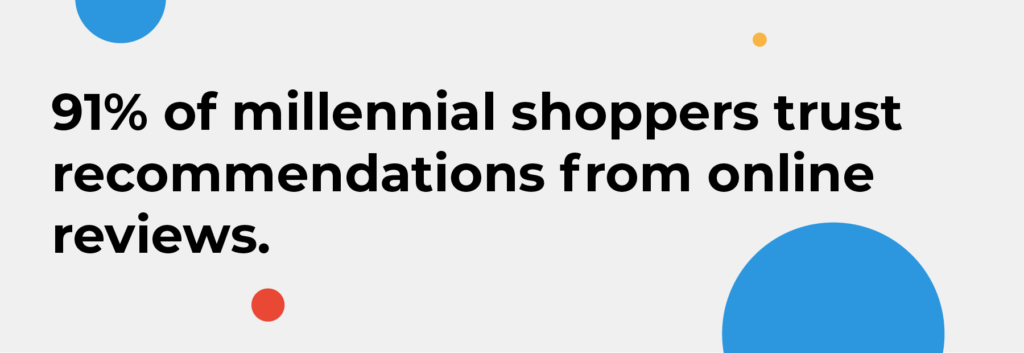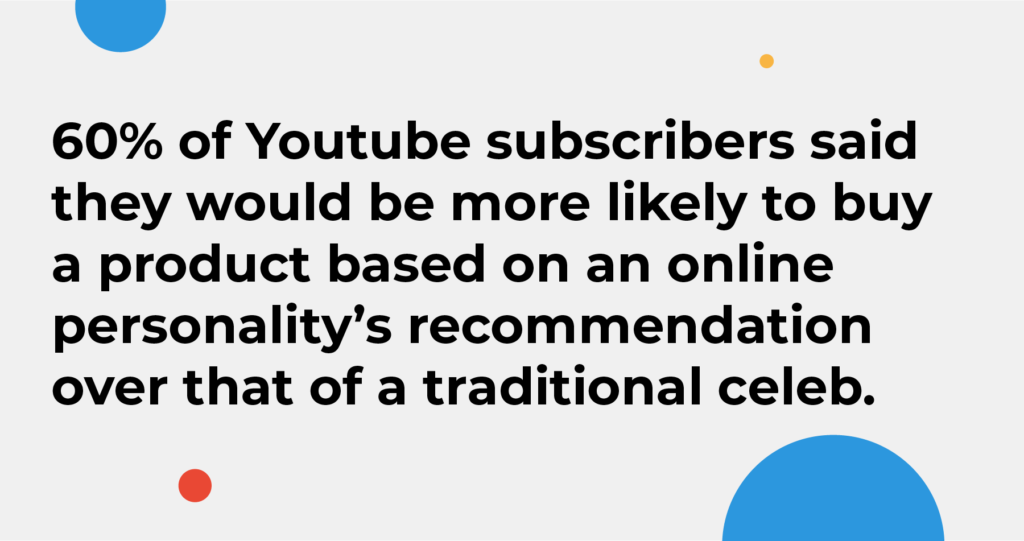User-generated content is clearly important. As e-commerce moves away from websites and digital storefronts and into social feeds, shoppers will increasingly see UGC either before, or completely in place of, brand-owned content. This makes UGC generation a top priority for consumer brands — especially challenger brands looking to disrupt established markets.
Fortunately, generating UGC doesn’t need to be difficult. Consumers love talking about their experience with brands, and many only need a slight nudge to become content creators. In this article, we’ll explore three effective strategies to inspire UGC generation and amplify brand engagement. Let’s dive in!
1. Ask for reviews and ratings
91% of millennial shoppers trust recommendations from online reviews as much as they trust friends and family. It’s also one of the easiest and most familiar forms of UGC generation for both brands and consumers.
Getting more reviews is a relatively straightforward process and starts with good preparation. First and foremost, brands need to be set up for reviews. So step one is registering with every review platform that makes sense for the market any brand is in — typically that means at least Google My Business and Facebook, but can include Yelp or other more specialized platforms. This can also include in-house review solutions on your owned pages, like Amazon’s product and seller rating systems.


Finally, it’s important to let potential customers see your reviews. Position them prominently, and make it easy for consumers to read reviews. And don’t stress about a few negative reviews, either — customers are willing to overlook some bad reviews if the overall trend is positive. Especially if negative reviews are seen to be addressed by the brand in a positive and satisfactory manner.
2. Join the social conversation
Like it or not, influencer marketing is here and it’s huge. Even a few years ago, Google found that YouTube stars were more influential than traditional celebrities and 60% of YouTube subscribers said they would be more likely to buy a product based on an online personality’s recommendation over that of a traditional celeb. With the rise of Instagram and micro-influencers, those numbers have only gone up.


Companies have largely adapted to the world of #hashtags and @mentions, but there is always room for improvement. Rather than forcing their way in, brands need to become part of the conversation on social if they want to boost UGC generation.
Being part of the conversation means understanding the context and the conversations happening around the brand, among their audience. While giant brands may be able to spend their way towards a trending owned hashtag, challenger companies find more success by identifying the things their audience is already talking about and getting involved. For an example of a brand doing an awesome job understanding their audience, take a look at how Wendy’s completely owns Twitter.
Customers like brands that understand them. Joining and contributing to existing conversations gives social users trust in your brand, which makes it that much more likely that they’ll tag you in photos of your product.
3. Make it worthwhile
Give customers a reason to promote a specific brand. Just releasing a hashtag into the world isn’t enough to make people care. Instead, brands need to identify the intrinsic motivators that push their audience and use those as a lever for UGC generation. If a brand is built up to be exclusive and high status, that lever might be associating status with UGC creators — take a look at Supreme, which does no real marketing, but is flooded with UGC.
Or instead of status, that lever might be a cause, like how TOMS has built a community around philanthropy. Or it could just be a humorous creative writing prompt, like when Netflix asked people “what’s something you can say during sex but also when you manage a brand twitter account?” Or an opportunity to help other users, like how Microsoft maintains a largely open forum for users to help each other with technical support, tips and tricks.
UGC is here, and it’s playing a huge role in how consumers choose products. It converts better than brand-generated content. It’s cheaper than advertising spend. It’s more authentic than product placements. It just works.





















